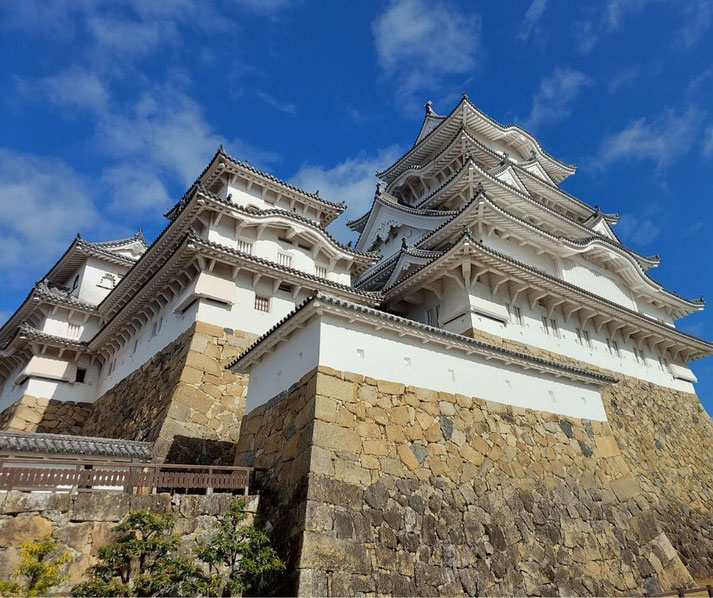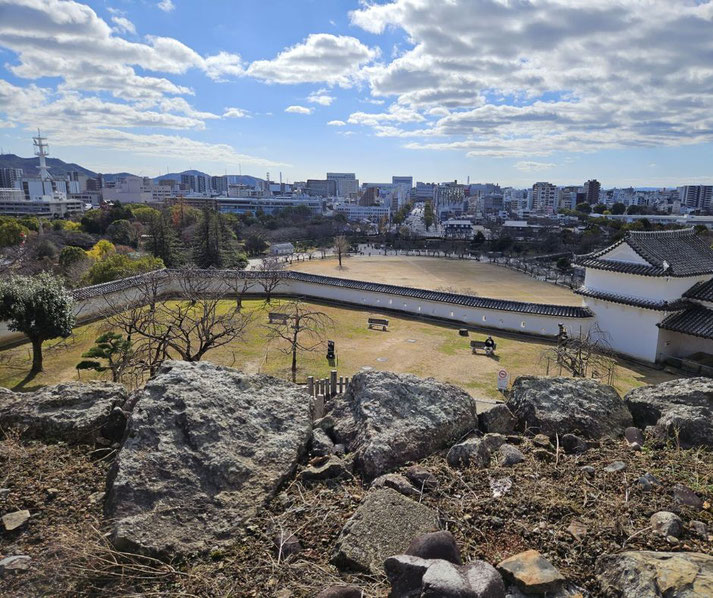Himeji Castle: The greatest samurai fortress still standing

Standing proudly in the heart of Hyogo Prefecture, Himeji Castle is a stunning example of traditional Japanese military architecture.
Often referred to as the "White Heron Castle" due to its elegant, white-plastered exterior, this vast fortress has miraculously survived countless wars and natural disasters.
It is now considered one of the best-preserved samurai castles in all of Japan.
The incredible history of Himeji Castle
Himeji Castle began its life in the early 14th century when a small fortification was built on the site by Akamatsu Norimura in 1333.
However, the castle as we know it today began to take shape in the late 16th century under the direction of Toyotomi Hideyoshi, a prominent daimyo and one of Japan's great unifiers.
In 1581, Hideyoshi ordered the construction of a three-story keep on the site of the original fortification.
Following Hideyoshi's death, Tokugawa Ieyasu, the founder of the Tokugawa shogunate, granted Himeji Castle to Ikeda Terumasa in 1600 as a reward for his support in the Battle of Sekigahara.
Ikeda embarked on a major expansion project, transforming the castle into a formidable fortress and a symbol of the Tokugawa shogunate's power.
The construction was completed in 1609, resulting in the impressive structure that still stands today.
Himeji Castle played a crucial role during the Edo period (1603-1868) as a strategic military and administrative center.
Luckily, the castle never witnessed any major battles, which has contributed to its remarkable state of preservation.
The unique architecture of the structure
The castle's most striking feature is its brilliant white exterior, which earned it the nickname "White Heron Castle" for its resemblance to a heron taking flight.
This effect is achieved through the use of white plaster, which also serves a practical purpose by making the walls more fire-resistant.
The castle complex is a prime example of the concentric circle design common in Japanese castles, with multiple layers of moats and defensive walls providing formidable protection against invaders.
The central keep, or tenshu, is a six-story structure that towers over the surrounding landscape, offering panoramic views and serving as the last line of defense.
The keep is connected to a series of smaller towers and buildings through a complex network of gates and winding paths, designed to disorient attackers and provide strategic advantages for defenders.

One of the most ingenious aspects of Himeji Castle's design is its use of psychological and physical deterrents.
The castle grounds are filled with narrow corridors, steep stairs, and hidden chambers, all intended to slow down and confuse enemies.
The castle also features numerous "ishi-otoshi" (stone-dropping windows) and "sama" (loopholes) for archers and gunmen, allowing defenders to attack assailants without exposing themselves.
Why Himeji was so important during wartime
Located at a key crossroads in the Kansai region, the castle was crucial in controlling access to western Japan, making it a prized asset for various ruling clans over the centuries.
During the Sengoku period (1467-1603), a time of near-constant military conflict and social upheaval, Himeji Castle became a vital stronghold for regional daimyos (feudal lords) vying for control of the land.
Its formidable defenses and strategic location allowed it to serve as a base for military operations, as well as a refuge in times of war.

Under the Tokugawa shogunate (1603-1868), Himeji Castle's role shifted more towards administrative functions.
As the seat of the Himeji Domain, the castle was the center of governance for the surrounding region.
It housed the domain's lord, his family, and a large contingent of samurai retainers.
The castle's presence symbolized the Tokugawa shogunate's authority and helped maintain order during a period of relative peace.
The reasons the castle is so well preserved
Over the centuries, the castle has endured natural disasters, including earthquakes and typhoons, as well as the threat of modernization and war.
Remarkably, it has remained largely intact, with its original structures preserved, making it one of the finest examples of Japanese castle architecture.
One of the most significant restoration efforts took place in the early 20th century when the castle was designated a national treasure.
This recognition brought attention to the need for preservation, leading to a series of restoration projects aimed at repairing and maintaining the castle's structures.
These efforts were guided by a commitment to preserving the castle's historical authenticity, using traditional materials and techniques whenever possible.

The most recent and comprehensive restoration project began in 2009 and was completed in 2015.
This project, known as the Heisei Era Great Restoration, focused on the main keep and involved extensive work to repair the roof, walls, and foundations.
The project also included the removal of decades of grime and pollution from the castle's white plaster walls, restoring their original brilliance.
Advanced technologies were used to analyze the structure and materials, ensuring that the restoration work was both historically accurate and sustainable.
These efforts are supported by the Japanese government, cultural organizations, and the local community, all of whom recognize the importance of safeguarding this iconic symbol of Japan's heritage for future generations.
What do you need help with?
Download ready-to-use digital learning resources
Copyright © History Skills 2014-2025.
Contact via email
With the exception of links to external sites, some historical sources and extracts from specific publications, all content on this website is copyrighted by History Skills. This content may not be copied, republished or redistributed without written permission from the website creator. Please use the Contact page to obtain relevant permission.





